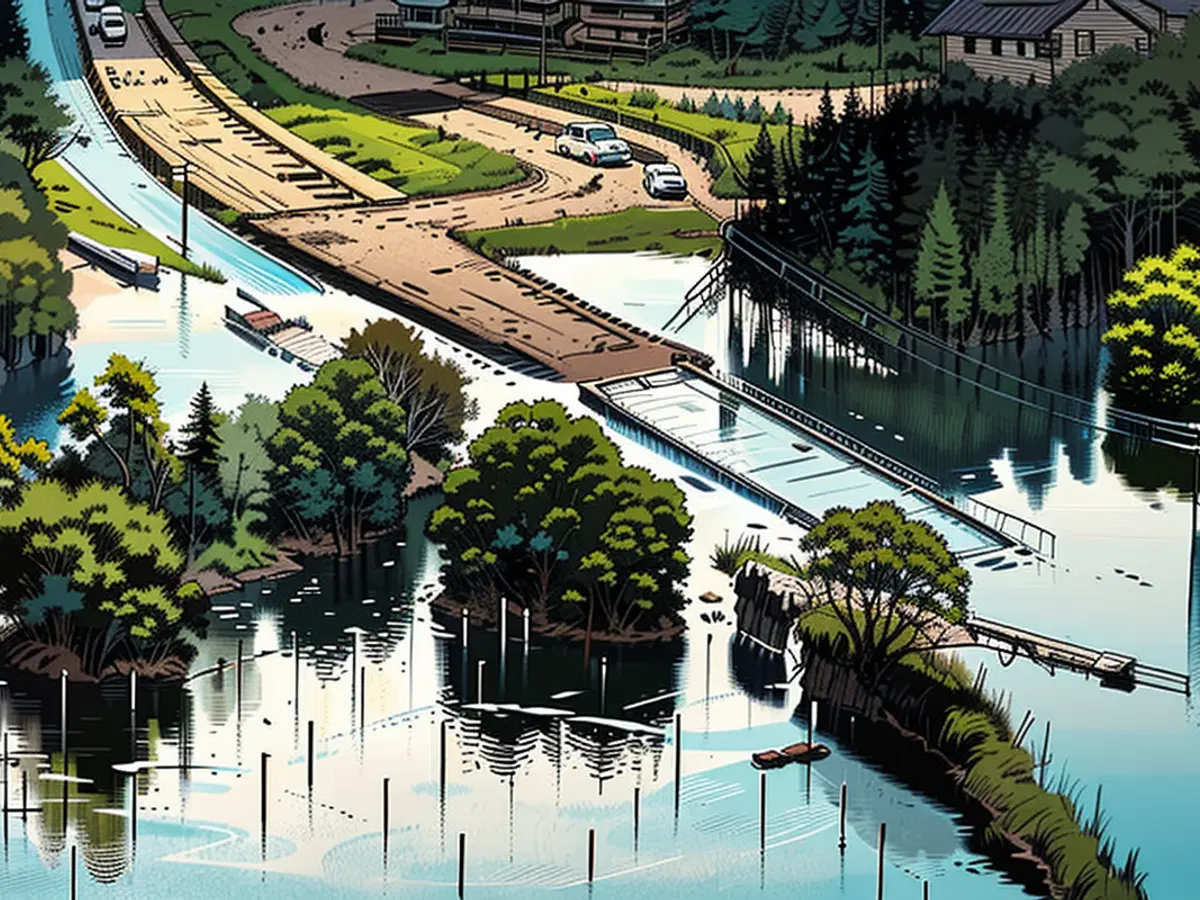Australia grapples with excessive flooding, tempests, and scorching heat conditions.
Recent meteorological observations have shown scorching temperatures in the western and northern regions of Australia, smashing previous heat records. Now, the southern portion of the country is experiencing its own set of extremes. Violent storms are wreaking havoc on structures, with torrential rain causing extensive floods in numerous areas, even major urban centers like Melbourne and Sydney aren't spared.
In Tasmania and the state of Victoria, including the bustling city of Melbourne, over 100,000 residents temporarily lost power, according to ABC News. Farmers in North Tasmania, like Chris Kilby from Westwood, referred to the winds as "simply abhorrent", with the storm ripping off roofs and uprooting trees. Tragically, a 63-year-old woman lost her life after a tree crashed into a vacation home in Moama, a town on the border between New South Wales and Victoria.
Sydney was also impacted: Over thirty flights were disrupted at the airport due to the storm, with only one operational runway reported by "Sky News Australia".
Scorching weather in the west and north
However, a stark contrast to these weather patterns is seen in Western Australia and the Northern Territory, where recent days have witnessed new heat records being established – it's winter here in Australia.
In one of Australia's popular tourist destinations, Kimberley, a scorching 41.5 degrees Celsius was recorded at the Yampi Sound weather station last week, marking an all-time high for that particular season. To worsen the situation, the August temperatures across Australia were noted as the highest since records began, reported Weatherzone. Climate change seems to be taking a heavy toll on the country.
Despite the ongoing heatwave in Western Australia and the Northern Territory, breaking previous temperature records, the southern part of Australia is experiencing a different extreme. Violent storms are causing floods in various areas, including major cities like Melbourne and Sydney, leading to power outages for over 100,000 residents in Tasmania and Victoria.






